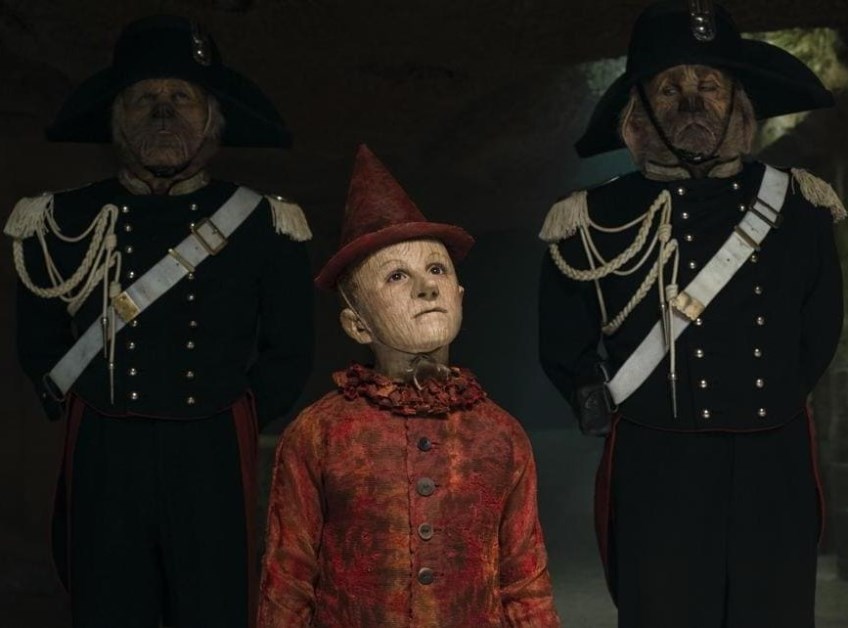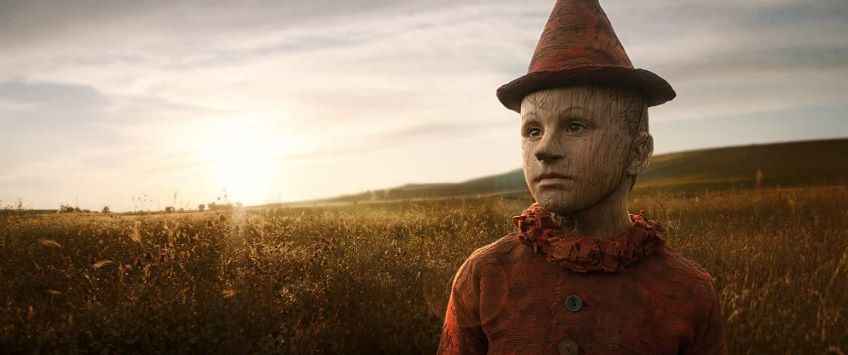Pinocchio (August 14, 2020) Cert PG, 124 minutes. In cinemas.
In 1940, Walt Disney introduced millions of American children living in uncertain, turbulent times to the story of Pinocchio. The rest of the world had to wait until the end of the Second World War, where the film was equally timely and well-received. The successful Toy Story franchise owes something to the story of an inanimate object, designed to delight children, who shares their longings, temptations, fears and insecurities about losing their guardians. Pinocchio’s wish to become a real boy, however, will only be granted if he proves himself brave, truthful and unselfish, a higher standard as we shall see, than normal boys. Yet these were attributes as important in 1940 as they were to the Italian political satirist Carlo Collodi (born, Lorenzini), who lived to see his home town, Collodi, in the Grand Duchy of Tuscany, become part of a unified Italy.
Carlo Collodi’s The Adventures of Pinocchio was published between 1881 and 1883 in the first Italian periodical aimed at children called Il Giornale per I bambini (1881-1889), before being published as a book. Italian director Matteo Garrone’s (Dogman, Gomorrah) lavish and powerful live adaptation offers today’s children a darker alternative to Disney’s sanitised, animated, and relatively short classic, while giving adults a chance to revisit this unsettling coming-of-age saga.
Kicking off a long list of great performances is Roberto Benigni (the writer-director- star of the Oscar winning Life is Beautiful). This is not only inspired casting but ironic, since Benigni’s own attempt to direct and star in a version of Pinocchio in 2002 (in which he played the title character) was relatively uninspired. Here Benigni is Geppetto, a starving carpenter in late 19th century Tuscany. When we meet him, he is trying in vain to drum up business amongst his neighbours who take pity on him, not with a job (money is tight all around), but with a plate of food.

Then one day Mangiafuoco’s (Gigi Proietti) travelling puppet show comes to town and Geppetto dreams of making his own puppet with whom he can travel the world. Geppetto is a stranger to luck, but on this occasion he finds Mastro Ciliegia (Paolo Graziosi) in a daze having just seen a new, beautiful piece of wood in his studio move on its own. When Geppetto comes begging for a piece of wood on account, Mastro Ciliegia is only too happy to unload the magical trunk. Geppetto is surprised at Ciliegia’s generosity and protests that the wood is too much and too perfect.
Geppetto quickly demonstrates his skills in creating a young boy puppet. Despite his long pointy nose and the chisel marks on his face, when dressed in a red Pierrot suit with pointy cap, and boots, it is amazingly lifelike. So much so, that when the puppet begins to talk, with his eyes and limbs moving on their own, and a glimmer of blush fills his cheeks, you think you are watching CGI. It is in fact the magical combination of the talented eight-year-old actor Federico Lelapi and prosthetics genius Mark Coulier. Coulier, from Lancashire, is the master behind the subtle prosthetics of Stan and Ollie, The Irony Lady (transforming Meryl Streep into Margaret Thatcher young and old), and The Grand Budapest Hotel.
Proud as any real father, Geppetto’s first priority is to take the puppet to school. He parades his instant “son” through the streets to the school house after literally taking the clothes from his back to purchase the mandatory school book. Pinocchio, however, has other ideas. As attracted to the travelling puppet show as was his creator, Pinocchio skips his first day of school, selling his school book for a ticket. More comfortable with fellow-puppets than with the idea of school, he follows the troupe to their lodging. There, he wins favour with a show of altruism that impresses Mangiafuco. He not only frees Pinocchio to return home, but hands him five gold coins to give to Geppetto.

Garrone returns to the original source and takes us through beautiful Italian landscapes (the film was shot in Tuscany and Puglia) that seem indifferent to the child abuse, cruelty, friendships, magic, and surprising acts of generosity and kindness they encompass. He creates a convincing world in which human beings are benevolent and malign; talking wooden puppets attend school; a gorilla (Teco Celio) is a judge who rewards the dishonest; and a recurrent fox (co-writer Massimo Ceccherini) and cat (Rocco Papaleo) pair swindle a gullible Pinocchio out of his coins.
The world is a dangerous place for little boys who ignore the advice of a 100-year-old cricket (Davide Marotta). In the Disney movie, Jiminy Cricket was the narrator superstar and the conscience of Pinocchio. Here, he is neither a sprite dandy nor a companion, but a grandfather figure who pops up with ignored words of wisdom..
It is only the intervention of one of the rare female characters, the Blue Fairy (Alida Baldari Calabria (young) and Marine Vacth) that can help the weak, indulgent, foolish and unworldly puppet to achieve his aim. She appears with an amusing entourage in different settings to administer second chances with tough love.
What about Pinocchio’s famous nose you may be wondering? There is only one scene where his nose grows in proportion to his lies – or omissions – and that is when he is relaying his adventures to the Blue Fairy. In a frightening scene, the transgression is manifested when birds perch on his nose and peck at it.
Eschewing CGI and animation Garrone reverts to illustrator Enrico Mazzanti’s original ink-and-nib illustrations for the novel. Out of these he creates a seamless mixture of human and animal characters interacting in a realistic (a child slave trader) and magical (Pinocchio and a tuna (Maurizio Lombardi) form a friendship inside a shark’s belly) world which no one questions. There is a subtle environmental message when a defeated tuna’s newfound heroism which is the closest the film comes to a modern Disney film.
A subtitled version is apparently available for children, but adults are advised to see it in the original version. As well as the scenes of child abuse (the cat and fox thieves hang Pinocchio from a tree like in a Sergio Leone western) there are other scenes that could disturb younger children. Some might also tire of a film that is episodic in nature. That said, the dazzling cinematography and the power of Italian-British composer Dario Marianelli’s (Atonement) understated score; the variety of the characters and suspenseful situations, and the genuine depth of emotion will send everyone home satisfied.




